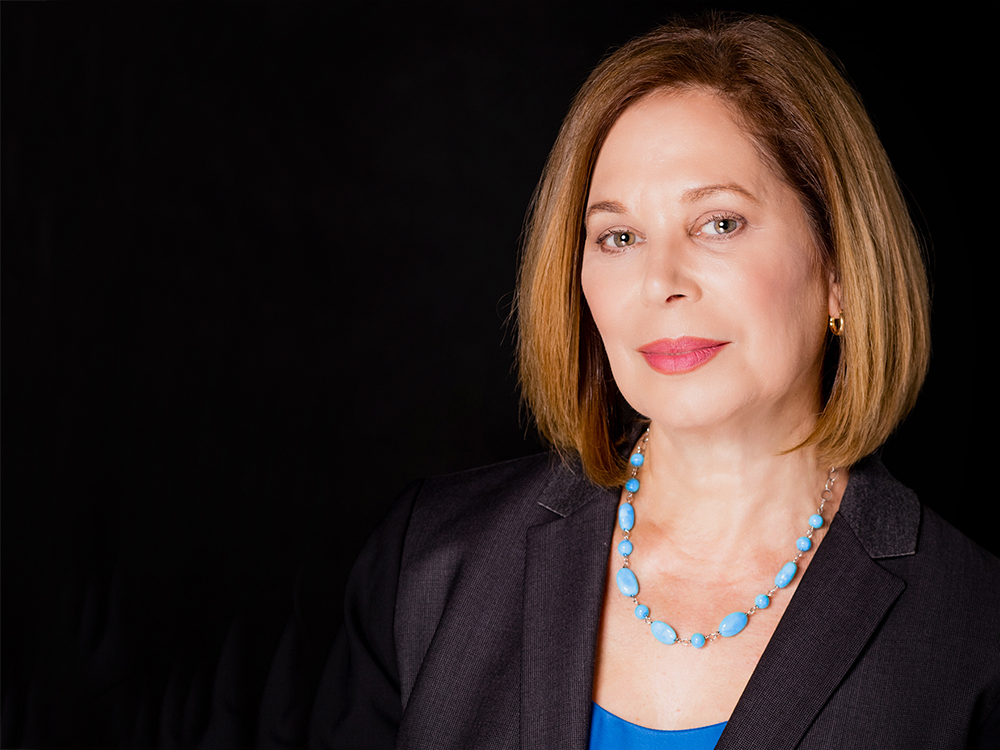Why Taking a Systems-Level Approach to Grants is Key to Driving Change

When the Episcopal Health Foundation (EHF) funded a study to determine why Black and Hispanic Texans were being infected by, hospitalized for, and dying from COVID-19 at higher rates than white residents, they found that the reasons weren’t strictly medical. Systemic conditions and disparities were driving factors: these populations are more likely to have front-line jobs, have preexisting medical conditions, and lack medical insurance. As EHF President and CEO Elena Marks said in a press release: “The human and economic costs of health disparities continue to grow during the pandemic, and we’re learning why we can’t address them through medicine alone.”
In short, context is everything. And EHF has always taken a holistic approach to improve health outcomes for Texans. Here, EHF Chief of Staff Eusebio Díaz talks with Marks about how EHF uses its grantmaking to drive equity by creating systems-level change.
Díaz: Perhaps a good place to start is for you to tell us a little bit about the Episcopal Health Foundation. What differentiates it from other foundations in its approach to address health issues?
Marks: EHF’s approach to health philanthropy is to try multiple, potential solutions simultaneously to find out what works best. Rather than relying on evidence-based strategies with known outcomes, we try new concepts, invest deeply, evaluate progress, and assess impact. When a foundation invests its assets, there’s an understanding of inherent risks. Each foundation determines its risk tolerance level. But too often, philanthropy can get so focused on funding the sure things, the best-practices, the evidence-based models. As a sector, sometimes it seems we tolerate more risk for how funds are invested in the stock market than how they are invested in the community. Most of the issues we focus on—such as access to care and realigning health systems to improve overall health and not just deliver medical care—are so large that no single philanthropy can solve them alone. What we can do is use our resources to test novel approaches, leverage larger, more sustainable funding, and address community-wide, population-level health issues.
Díaz: What does systems change mean to you and how do you go about doing that through the foundation’s grantmaking?
Marks: We see systems change as helping to develop and build health systems infrastructure that improves the health of communities. It also means shifting from filling gaps in the health system to addressing systemic problems that cause and perpetuate those gaps. In some communities, health systems are high-functioning, and in others, systems don’t exist, are incomplete, or are underperforming. We see great opportunity in supporting the development of networks and ways to pay for and sustain strong health systems. One way we do this is by providing grants and other support to community clinics to help them strengthen their capacity to address community health issues, factors that extend beyond the clinic walls. We are also funding collaborative efforts that look at strengthening care and service networks to address social issues and create sustainable financial support to address these issues. Our goal is to increase investment in the social, economic, and behavioral drivers of health, not just medical care, to achieve better health outcomes.
Díaz: Has systems-level change always been an area of focus for EHF?
Marks: Yes. From the beginning, we’ve been most interested in work that takes a systems approach to improving community health. This orientation supports comprehensive approaches to health challenges rather than one-of” efforts by independent organizations and groups working alone. It also allows us to address ineffective system structures rather than trying to make up for the problems those structures create. It challenges us to move from shorter- to longer-term investments and from downstream to upstream interventions.
Díaz: How does equity factor into this work?
Marks: If we look at the social determinants of health, many of these factors like food insecurity, social conditions, and where one lives, disproportionately impact people of color. If we look at our work to increase health coverage for the millions of uninsured people in Texas, most folks who would gain health insurance are people of color. We saw how these issues resulted in a disproportionate impact on Black and Hispanic folks in the country, so this work is absolutely about equity.
Díaz: In these efforts, what role have EHF’s program officers played?
Marks: Our program officers have developed strong relationships with our grantees from across the service spectrum and have helped us to look past the silos and find common threads among grantees that can help amplify their work and increase the impact we are trying to have with our funding. One example of this is our grantmaking to advocacy organizations. In addition to advocating for things like Medicaid expansion, these grant partners have been instrumental in providing technical support to service provider organizations who are interested in building their capacity in this area. Our program officers are often that link to connect grantees with each other. That’s because they know our grant partners and are in constant contact to understand their needs, challenges, and opportunities.
Díaz: I imagine systems-level change can occur slowly and progress may be challenging to measure. How does EHF approach how it measures its impact?
Marks: One of the biggest challenges in grantmaking is measuring systems and community-level change. We quickly realized that the same metrics a foundation will use to measure the impact of a grant or program were not going to tell us how we are doing or whether we are on the right path to creating systems-level change. We also recognized that when we look for change at that level, change can come slowly. So, we are now assessing this work through a framework that looks at indicators that can help us determine if we are on the right path, one that looks at both process and outcomes.
Díaz: For CEOs of organizations that aren’t currently making grants to effect systems-level change, what’s the first thing they should do to start on that journey? And what is the first thing a CEO should ask of their program officers and/or grants managers?
Marks: Talk to other funders that are working to improve and transform systems, learn from their efforts, why they do what they do, the challenges they have encountered, and what has been working. I would also say to have program staff engage their grantees in deeper conversations regarding the factors that drive poor health in the people they serve, and to scan their portfolios for grants that support these upstream issues and what might be missing.



